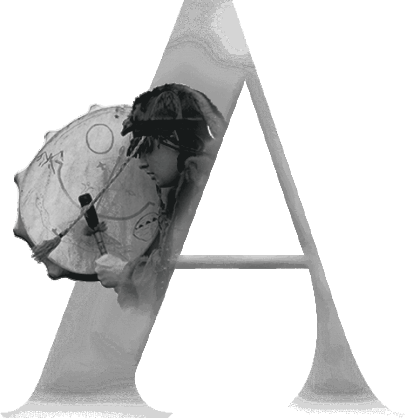The difference between shamanism
and paganism
and paganism
There is an opinion that it is practically the same thing. They say that shamanism is a phenomenon that is already included by default in the world picture of paganism. This is not the case, of course. To begin with, there are many ethnic groups in the world that practice shamanism, and the same situation with paganism. Here we often need to compare specifically taken paganism and specifically taken shamanism. And these phenomena are not the same. Though if to generalize very deeply and with big tolerances, it is possible to deduce similar principles of world understanding in all ethnic beliefs and all types of shamanism.

For understanding and further analysis it is necessary to know that paganism and shamanism are related beliefs, and more precisely, shamanism just in some places (geographically) evolved into pagan beliefs. And they are relatives in their cultural basis. And there are indeed many common features. But it should be clearly understood that paganism is a later form of understanding the world.
Let's look at the common bases:
- Communication with nature. The world is alive in all spheres of its manifestation.
- Attitudes towards nature itself, spirits and natural phenomena are similar, though different in essence.
These are two aspects, and at the same time one.
Both paganism and shamanism are natural beliefs. And the world itself, nature, elements are the basis of cosmological myths and general understanding of the world. This is what they have in common, and this is the main theme on which paganism was derived from shamanism. But there are also a number of points where the understanding of ritualism and religiosity diverge. And it is in such things that we realize that these are two different phenomena.
First and foremost is the belief of paganism in different Gods. The gods are most often humanoid and are direct relatives of the pagans. In shamanism, this role is played by spirits. Spirits of forests, mountains, rivers and lakes, good and evil spirits and even great ancestors. If with the spirits can communicate with the Shaman, in paganism with the gods can communicate with the magician, vedun.
In the second place is the necessity of paganism in symbols. These are symbols in clothing, in amulets, in gestures, etc. In shamanism, talismans and amulets are more common.
It is also worth mentioning the main attributes of the shaman - it is a drum, the mouth harp, shaman's mirror, shaman's costume. In paganism is already less often used drum in ritual activities and the more rare is the mouth harp. And the costume of the shaman completely disappears in the priestly activity and the very principle of this activity changes completely.
Thirdly, in paganism, as well as in shamanism, there are sacred groves, stones, great trees and the animation of nature.
But it looks dim, faded, and not as all-encompassing as in shamanism. For example, in the world picture of pagans there are most often several worlds, 3 or more. In these worlds live themselves, the Gods and spirits. In shamanism a practicing shaman travels between worlds, communicates there with spirits and these worlds are many.
Let's look at the common bases:
- Communication with nature. The world is alive in all spheres of its manifestation.
- Attitudes towards nature itself, spirits and natural phenomena are similar, though different in essence.
These are two aspects, and at the same time one.
Both paganism and shamanism are natural beliefs. And the world itself, nature, elements are the basis of cosmological myths and general understanding of the world. This is what they have in common, and this is the main theme on which paganism was derived from shamanism. But there are also a number of points where the understanding of ritualism and religiosity diverge. And it is in such things that we realize that these are two different phenomena.
First and foremost is the belief of paganism in different Gods. The gods are most often humanoid and are direct relatives of the pagans. In shamanism, this role is played by spirits. Spirits of forests, mountains, rivers and lakes, good and evil spirits and even great ancestors. If with the spirits can communicate with the Shaman, in paganism with the gods can communicate with the magician, vedun.
In the second place is the necessity of paganism in symbols. These are symbols in clothing, in amulets, in gestures, etc. In shamanism, talismans and amulets are more common.
It is also worth mentioning the main attributes of the shaman - it is a drum, the mouth harp, shaman's mirror, shaman's costume. In paganism is already less often used drum in ritual activities and the more rare is the mouth harp. And the costume of the shaman completely disappears in the priestly activity and the very principle of this activity changes completely.
Thirdly, in paganism, as well as in shamanism, there are sacred groves, stones, great trees and the animation of nature.
But it looks dim, faded, and not as all-encompassing as in shamanism. For example, in the world picture of pagans there are most often several worlds, 3 or more. In these worlds live themselves, the Gods and spirits. In shamanism a practicing shaman travels between worlds, communicates there with spirits and these worlds are many.
+79221343011 Whatsapp, Viber, Telegram, Signal
info@ahamkara.org
Follow Ahamkara on:
https://ahamkara.teachable.com/ - Online Shamanic School
https://www.facebook.com/ahamkara.eu/notifications... - my Facebook
https://www.instagram.com/ahamkara.eu/ - my Instagram
info@ahamkara.org
Follow Ahamkara on:
https://ahamkara.teachable.com/ - Online Shamanic School
https://www.facebook.com/ahamkara.eu/notifications... - my Facebook
https://www.instagram.com/ahamkara.eu/ - my Instagram
